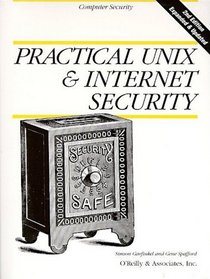Search -
Practical Unix and Internet Security, 2nd Edition
Practical Unix and Internet Security 2nd Edition
Author:
When Practical UNIX Security was first published in 1991, it became an instant classic. Crammed with information about host security, it saved many a UNIX system administrator and user from disaster. This second edition is a complete rewrite of the original book. It's packed with twice the pages and offers even more practical inform... more »
Author:
When Practical UNIX Security was first published in 1991, it became an instant classic. Crammed with information about host security, it saved many a UNIX system administrator and user from disaster. This second edition is a complete rewrite of the original book. It's packed with twice the pages and offers even more practical inform... more »
ISBN-13: 9781565921481
ISBN-10: 1565921488
Publication Date: 4/1/1996
Pages: 1,000
Edition: 2
Rating: 2
ISBN-10: 1565921488
Publication Date: 4/1/1996
Pages: 1,000
Edition: 2
Rating: 2
5 stars, based on 2 ratings
Genres:
- Business & Money >> Processes & Infrastructure >> E-Commerce >> General
- Computers & Technology >> Web Development & Design >> Security & Encryption >> Encryption
- Computers & Technology >> Networking & Cloud Computing >> Networks, Protocols & APIs >> Network Security
- Computers & Technology >> Operating Systems >> Unix >> General
- Computers & Technology >> Operating Systems >> General
- Computers & Technology >> Programming >> General
- Computers & Technology >> Security & Encryption >> Privacy & Online Safety
- Computers & Technology >> Business Technology >> Project Management >> Security
- Computers & Technology >> Authors, A-Z >> Garfinkel, Simson
- Computers & Technology >> General
- Engineering & Transportation >> Professional Science >> Mathematics




